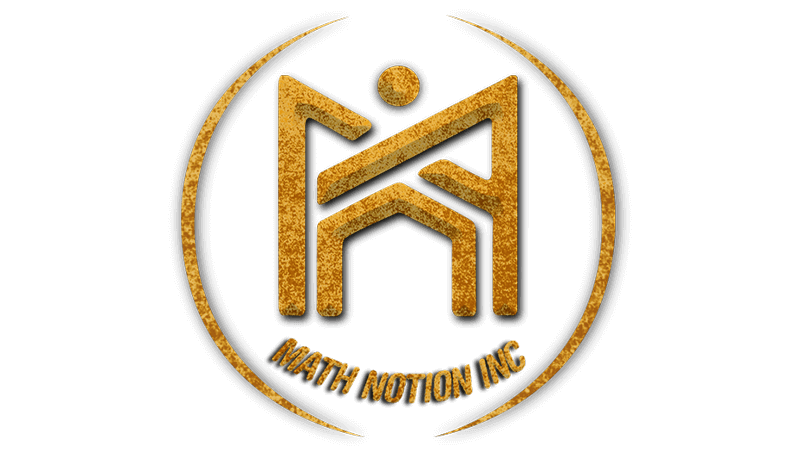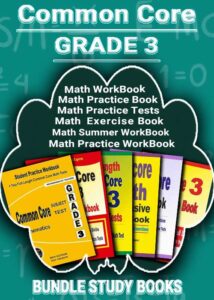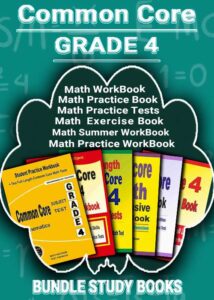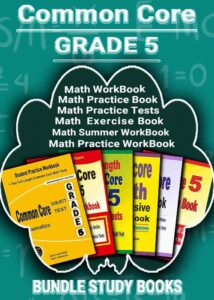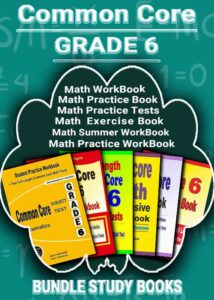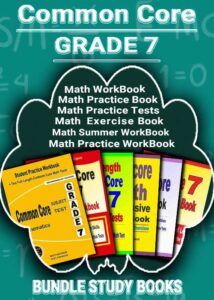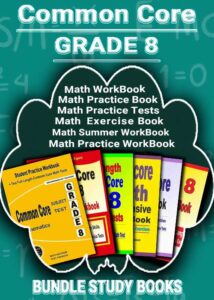
Study Time: 5minutes
Introduction to the Common Core State Standards (CCSS)
Introduction
The Common Core State Standards (CCSS) have been a game-changer in the field of education across the United States. Introduced to create a uniform framework for education, the CCSS aim to ensure that all students, regardless of their geographic location, receive a high-quality education that prepares them for college and careers. This article will provide a comprehensive introduction to the Common Core State Standards, exploring their development, implementation, benefits, and challenges. As you delve into this topic, you’ll gain a deeper understanding of how CCSS is shaping the future of education and why it is a crucial component of the modern educational landscape.
1. Historical Context
1.1 Origins of CCSS
The Common Core State Standards were introduced in response to the disparate educational standards across the United States. Before their implementation, each state had its own set of standards, leading to inconsistencies in educational quality and student preparedness. The need for a unified approach to education was clear, and in 2009, the National Governors Association (NGA) and the Council of Chief State School Officers (CCSSO) initiated the development of the CCSS.
1.2 Development Process
The development of the CCSS was a collaborative effort involving educators, researchers, and experts from various fields. The process was grounded in evidence-based research and benchmarked against international standards to ensure that American students could compete globally. The goal was to create standards that would foster critical thinking, problem-solving, and analytical skills essential for success in college and careers.
1.3 Adoption by States
Adoption of the CCSS was voluntary, yet strongly encouraged by federal incentives such as the Race to the Top initiative. By 2010, the majority of states had adopted the standards, although some have since modified or abandoned them in favor of state-specific standards.
2. Key Principles of Common Core State Standards
2.1 Focus on Critical Thinking
One of the fundamental principles of the CCSS is its focus on developing students’ critical thinking skills. Rather than emphasizing rote memorization, the standards encourage students to analyze, evaluate, and create, fostering a deeper understanding of the material.
2.2 Emphasis on Problem-Solving Skills
The CCSS prioritize problem-solving abilities, teaching students to approach problems methodically and to apply their knowledge in practical situations. This skill is particularly emphasized in the mathematics standards, where students learn to tackle complex problems through a variety of strategies.
2.3 Consistent Learning Goals
The CCSS establish clear and consistent learning goals for students at each grade level. This consistency ensures that students across the country are meeting the same educational milestones, which is particularly beneficial for students who move between states.
3. Structure of CCSS
3.1 English Language Arts Standards
The English Language Arts (ELA) standards are designed to build students’ literacy skills across four key areas: reading, writing, speaking and listening, and language. These standards emphasize the importance of reading a diverse range of texts and developing strong writing skills.
3.2 Mathematics Standards
The mathematics standards are divided into two main components: the Standards for Mathematical Content and the Standards for Mathematical Practice. The content standards outline the specific skills and knowledge students need to acquire, while the practice standards describe the processes and proficiencies students should develop.
3.3 Standards for Mathematical Practice
The Standards for Mathematical Practice highlight eight key practices that students should develop throughout their education. These include making sense of problems, reasoning abstractly, constructing viable arguments, and modeling with mathematics.
4. Implementation of CCSS
4.1 State-Level Adoption
The adoption of CCSS at the state level involved significant changes to existing curricula. States had to align their educational materials and assessments with the new standards, which often required extensive revisions.
4.2 Curriculum Changes
Implementing the CCSS necessitated comprehensive changes to school curricula. Educators had to ensure that their lesson plans and instructional materials aligned with the new standards, which often involved adopting new textbooks and resources.
4.3 Teacher Training and Professional Development
Effective implementation of the CCSS also required substantial investment in teacher training and professional development. Educators needed to understand the new standards and develop new teaching strategies to meet the CCSS’s rigorous requirements.
5. Benefits of CCSS
5.1 Consistency Across States
One of the most significant benefits of the CCSS is the consistency it brings to education across the United States. With uniform standards, students receive a comparable education regardless of where they live, which is especially important for those who move between states.
5.2 Enhanced Student Preparedness
The CCSS aim to better prepare students for college and careers by emphasizing critical thinking, problem-solving, and analytical skills. These skills are essential for success in higher education and the workforce, making CCSS graduates more competitive.
5.3 Improved Critical Thinking and Problem-Solving
By focusing on critical thinking and problem-solving, the CCSS help students develop a deeper understanding of the material. This approach not only improves academic performance but also equips students with the skills needed to navigate complex real-world situations.
6. Challenges and Criticisms of CCSS
6.1 Implementation Difficulties
Implementing the CCSS has been challenging for many schools and districts. Adjusting curricula, training teachers, and providing the necessary resources have required significant time and financial investment.
6.2 Public Perception
Public perception of the CCSS has been mixed, with some parents and educators expressing concerns about the standards’ rigor and the changes in teaching methods. Misunderstandings about the goals and benefits of the CCSS have also contributed to resistance.
6.3 Adaptation Challenges
Some schools have struggled to adapt to the new standards, particularly those in under-resourced areas. Ensuring that all students have access to the necessary materials and support has been a major hurdle.
7. Comparative Analysis
7.1 Traditional Standards vs. CCSS
Traditional educational standards often focused on memorization and procedural knowledge, while the CCSS emphasize understanding, application, and higher-order thinking skills. This shift aims to produce more well-rounded, capable students.
7.2 International Educational Standards
The CCSS were benchmarked against international standards to ensure that American students could compete globally. By aligning with high-performing countries, the CCSS aim to raise the bar for U.S. education.
8. Technology and CCSS
8.1 Digital Learning Tools
Technology plays a crucial role in the implementation of the CCSS. Digital learning tools, such as interactive software and online resources, support the standards’ focus on critical thinking and problem-solving.
8.2 Online Resources
Numerous online platforms provide resources aligned with the CCSS, including lesson plans, practice problems, and instructional videos. These resources are invaluable for both teachers and students.
8.3 Future Technological Integrations
Future technological advancements, such as adaptive learning technologies and virtual reality, have the potential to further enhance the implementation of the CCSS. These innovations can provide personalized learning experiences and help students better understand complex concepts.
9. Real-Life Applications and Success Stories
9.1 Case Studies from Different States
Several states have reported success with the implementation of the CCSS. Case studies highlight how schools have improved student outcomes by embracing the standards and providing adequate support and resources.
9.2 Personal Testimonials
Personal testimonials from students and teachers offer valuable insights into the real-life impact of the CCSS. Many students report a better understanding of the material, while teachers appreciate the focus on critical thinking and problem-solving.
10. Expert Insights
10.1 Educators’ Perspectives
Educators’ opinions on the CCSS vary, but many agree that the standards provide a more coherent and rigorous framework for teaching. Experts emphasize the importance of proper implementation and support for teachers.
10.2 Policy Makers’ Views
Policymakers highlight the potential of the CCSS to improve educational equity and raise overall student achievement. They advocate for continued investment in training and resources to ensure successful implementation.
10.3 Academic Research
Academic research supports the efficacy of the CCSS in enhancing students’ understanding and skills. Studies show that students who learn under the CCSS framework perform better in critical thinking and problem-solving tasks compared to those who follow traditional methods.
11. Future of CCSS
11.1 Potential Reforms
As with any educational initiative, the CCSS are likely to undergo reforms and updates to address emerging challenges and incorporate new research findings. Continuous evaluation and feedback from educators and stakeholders will drive these changes.
11.2 Evolution of Standards
Educational standards are not static, and the CCSS will evolve to meet the changing needs of students and society. Future updates may include greater integration of technology, interdisciplinary approaches, and new methods for assessing student progress.
11.3 Long-Term Educational Impact
The long-term impact of the CCSS on education will be seen in the improved readiness of students for college and careers. By fostering critical thinking and problem-solving skills, the CCSS aim to produce a generation of learners who are well-equipped to tackle the challenges of the future.
12. FAQs about CCSS
Q1: What are the Common Core State Standards (CCSS)? A1: The Common Core State Standards (CCSS) are a set of educational benchmarks designed to ensure that students across the U.S. receive a high-quality education, emphasizing critical thinking, problem-solving, and analytical skills.
Q2: Why were the CCSS created? A2: The CCSS were created to address inconsistencies in educational standards across different states and to ensure that all students are prepared for college and careers.
Q3: How do the CCSS differ from traditional standards? A3: Traditional standards often focused on memorization and procedural knowledge, while the CCSS emphasize understanding, application, and higher-order thinking skills.
Q4: What are the key components of the CCSS? A4: The CCSS consist of standards for English Language Arts and Mathematics, as well as Standards for Mathematical Practice that highlight essential skills and processes.
Q5: What benefits do the CCSS offer? A5: The CCSS offer consistency across states, enhanced student preparedness for college and careers, and improved critical thinking and problem-solving skills.
Q6: What challenges are associated with implementing the CCSS? A6: Challenges include difficulties in curriculum alignment, teacher training, public perception, and ensuring adequate resources for all students.
Q7: How is technology integrated into the CCSS? A7: Technology supports the CCSS through digital learning tools, online resources, and potential future innovations like adaptive learning and virtual reality.
Q8: What is the future of the CCSS? A8: The CCSS will continue to evolve, with potential reforms and updates to address new challenges and incorporate advancements in educational research and technology.
